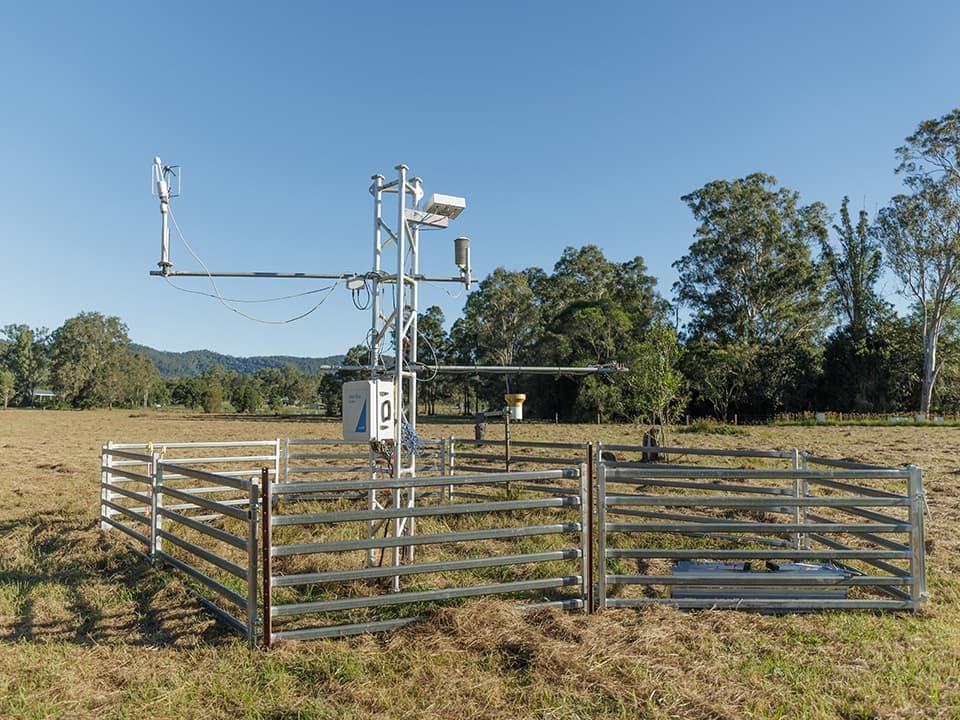What is a flux tower?
An Eddy Covariance Flux Tower (flux tower) continuously measures gas exchange between the land surface (soil and vegetation) and the atmosphere. It monitors a large area, from several metres up to 2km in the upwind direction of its location.
Flux tower data lets us track greenhouse gas exchanges by ecosystems and find out how different land management practices affect emissions.
- A flux describes how much energy or mass moves through a unit area per unit time.
- An eddy is a rotating parcel of air that moves across the land surface.
- Covariance describes how two things change together.
Flux towers are used at SERF and elsewhere in Australia by the TERN Ecosystem Observatory to measure the vertical movement of greenhouse gases that are carried by eddies to and from the land surface. Over time, the concentration of greenhouse gases in eddies changes, which reveals the story of whether an ecosystem is acting as a source (releases more carbon than it absorbs) or a sink (absorbs more carbon than it releases).
How flux towers can help inform soil carbon storage
As soil microbes consume organic matter, they help add carbon to the soil. So, for soil carbon to increase, an ecosystem needs to produce enough biomass through photosynthesis to support a healthy soil microbiome. Flux towers provide a measure of how much carbon dioxide has been taken up by an ecosystem and how it changes over time. With additional measurements of soil respiration, biomass and modelling, the amount of carbon stored in vegetation be accounted for and subtracted from flux tower NEE. The remaining portion will be the amount of carbon stored in the soil.
